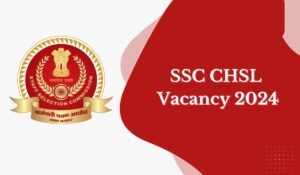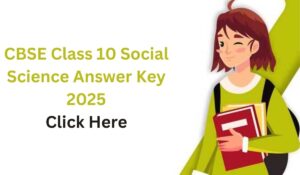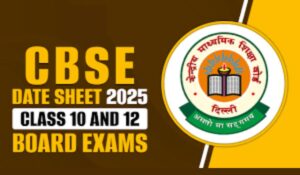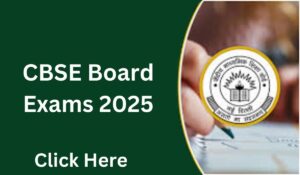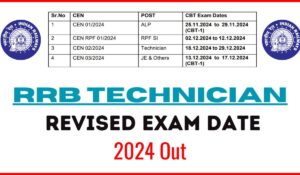CBSE Class 12 Physical Education Question: The Central Board of Secondary Education (CBSE) is scheduled to administer the Class 12 Physical Education examination on February 17, from 10:30 AM to 1:30 PM. This examination is mandatory for students across all academic streams. It is advisable for candidates to review significant questions, anticipated queries, and previous years’ papers in the days leading up to the exam. The CBSE Class 12 Physical Education Question Paper for 2025 will be available for download on this page shortly.
CBSE Class 12 Physical Education Question Paper 2025
The Class 12 Physical Education board examination is conducted for a total of 70 marks. Following the exam, students will be able to access the CBSE Class 12 Physical Education Question Paper 2025 PDF here. In the meantime, to assist students in their preparation, we have compiled a list of crucial and likely questions that may appear in this year’s board examination. It is essential to practice these questions thoroughly to achieve favorable results.

Pattern of the Class 12 CBSE Physical Education Question Paper for 2025
The 2025 Class 12 Physical Education question paper will feature various types of questions. A comprehensive exam pattern has been provided below to aid students in attaining high scores.
| Section Name | Question Numbers | Type of Questions | Marks per Question | Total no. of Questions | Attempt Required | Word Limit |
| A | 1 – 18 | Multiple Choice Questions (MCQs) | 1 | 18 | All compulsory | – |
| B | 19 – 24 | Very Short Answer Questions | 2 | 6 | Any 5 | 60-90 words |
| C | 25 – 30 | Short Answer Questions | 3 | 6 | Any 5 | 100-150 words |
| D | 31 – 33 | Case Study-Based Questions | 4 | 3 | Any 2 (with internal choice) | – |
| E | 34 – 37 | Long Answer Questions | 5 | 4 | Any 3 | 200-300 words |
Expected Class Question Paper with Answers CBSE
Experts in board examinations have identified the most probable questions that may be included in the Physical Education exam for 2025, as detailed below.
Multiple Choice Questions (1 mark each)
- Q.1) Which of the following does not pertain to the functions of sports event management?
a) Planning
b) Staffing
c) Cooking
d) Controlling
CBSE Class 12 Physical Education Question Paper 2025
Q.2) What is the primary objective of an Intramural Tournament?
a) To foster competition at the school level
b) To include international teams
c) To organize national-level competitions
d) To prepare Olympic athletes
Q.3) Which postural deformity is defined by knees that curve inward?
a) Knock knees
b) Bow legs
c) Flat feet
d) Scoliosis
Q.4) What is a significant issue for female athletes concerning their menstrual health?a) Increased muscle mass
b) Female Athlete Triad
c) Decreased endurance
d) Elevated testosterone levels
Q.5) Which physiological aspect primarily influences endurance in athletes?
a) Heart rate
b) Body fat percentage
c) Bone density
d) Flexibility
Q.6) What classification of injury does a sprain fall under?
a) Muscle injury
b) Bone fracture
c) Ligament injury
d) Dislocation
Q.7) Which of Newton’s Laws is relevant when a runner initiates movement after pushing off the ground?
a) First Law
b) Second Law
c) Third Law
d) Law of Gravitation
Q.8) In which sport is the center of gravity most vital for maintaining balance?
a) Running
b) Gymnastics
c) Cricket
d) Chess
Q.9) Which of the following exemplifies a first-class lever?
a) Biceps curl
b) Seesaw
c) Wheelbarrow
d) Calf raise
Q.10) What function does friction serve in sports?
a) Diminishes motion
b) Enhances grip and movement
c) Completely halts movement
d) Has no impact in sports
Q.11) To what does the Big Five Theory pertain?
a) Sports nutrition
b) Personality types
c) Biomechanics
d) Sports injuries
Q.12) Which type of motivation is derived from external rewards such as trophies or medals?
a) Intrinsic motivation
b) Extrinsic motivation
c) Self-motivation
d) Performance motivation
Q.13) What does self-talk refer to in the context of sports psychology?
a) Communicating with teammates
b) Delivering motivational speeches
c) Mentally encouraging oneself
d) Disputing with referees
Q.14) What constitutes the Microcycle within a sports training regimen?
a) A training plan spanning one year
b) A training duration of several days to a week
c) A long-term training approach
d) A warm-up sequence
Q.15) What is the main objective of circuit training?
a) To enhance speed exclusively
b) To develop both endurance and strength
c) To increase flexibility
d) To focus solely on coordination
Q.16) Which of the following is not a technique for building strength?
a) Isometric exercises
b) Plyometric exercises
c) Aerobic exercises
d) Weight training
Q.17) A football player experiences significant anxiety prior to a crucial match. Which mental training strategy could be beneficial?
a) Self-talk
b) Strength training
c) Avoiding the match
d) Increasing practice hours
Q.18) A sprinter utilizes a starting block to propel themselves for acceleration. Which biomechanical principle is relevant in this scenario?
a) Newton’s Third Law
b) Frictional resistance
c) Centre of gravity
d) Law of Levers
Very Short Answer Questions
Q.19) What is the significance of planning and organizing in the management of sports events?
Q.20) Identify two prevalent postural deformities in children and describe methods for their correction.
Q.21) Discuss two physiological effects of exercise on the cardiovascular system.
Q.24) What distinguishes endurance training from strength training?
CBSE Class 12 Physical Education Question Paper 2025
Answer Key For Multiple Choice Questions
| Question | Correct Answer |
| Which of the following is not a function of sports event management? | c) Cooking |
| What is the main purpose of an Intramural Tournament? | a) To promote school-level competition |
| Which postural deformity is characterized by inward curving knees? | a) Knock knees |
| What is a major concern for women athletes regarding their menstrual health? | b) Female Athlete Triad |
| Which physiological factor mainly affects endurance in athletes? | a) Heart rate |
| What type of injury is a sprain? | c) Ligament injury |
Answer Key For Multiple Choice Questions
| Which of Newton’s Laws is applied when a runner starts moving after pushing off the ground? | c) Third Law |
| In which sport is the centre of gravity most crucial for balance? | b) Gymnastics |
| Which of the following is an example of a first-class lever? | b) Seesaw |
| What is the role of friction in sports? | b) Improves grip and movement |
| What is the Big Five Theory related to? | b) Personality types |
| Which type of motivation comes from external rewards like trophies or medals? | b) Extrinsic motivation |
| What is self-talk in sports psychology? | c) Encouraging oneself mentally |
| What is the Microcycle in a sports training cycle? | b) A training period of a few days to a week |
| What is the primary goal of circuit training? | b) Develop endurance and strength |
| Which of the following is not a method of developing strength? | c) Aerobic exercises |
| A football player feels high anxiety before an important match. What mental training technique can help? | a) Self-talk |
| A sprinter uses a starting block to push off for acceleration. Which biomechanical concept applies here? | a) Newton’s Third Law |
Answer Key for Very Short Answer Questions
| Question | Answer |
| What is the importance of planning and organizing in sports event management? | Planning ensures smooth execution of sports events by allocating resources and responsibilities. Organizing distributes work among different committees to manage tasks efficiently. |
| What are two common postural deformities in children, and how can they be corrected? | Knock Knees: Corrected through exercises like cycling. Bow Legs: Corrected by strengthening leg muscles and wearing corrective shoes. |
| Explain any two physiological effects of exercise on the cardiovascular system. | 1. Increases Heart Efficiency – Strengthens the heart, improving blood circulation. 2. Lowers Blood Pressure – Reduces stress on arteries, preventing hypertension. |
| What is Newton’s Third Law of Motion, and how is it applied in sports? | Newton’s Third Law states, “For every action, there is an equal and opposite reaction.” Example: A sprinter pushes against the track, and the track pushes back, propelling them forward. |
| Define motivation in sports. How does it affect an athlete’s performance? | Motivation is the drive to achieve a goal. It helps athletes stay focused, train consistently, and perform better. Intrinsic motivation comes from personal satisfaction, while extrinsic motivation comes from rewards. |
| What is the difference between endurance training and strength training? | Endurance Training: Improves stamina using activities like long-distance running. Strength Training: Increases muscle power through weightlifting and resistance exercises. |
- READ MORE: GATE 2025 Physics Answer Key: Check Here And Download Now PH Paper Key PDF
CBSE Most Repeated Important Questions
The following are the most significant and frequently asked questions in the CBSE Class 12 physical education curriculum, which are likely to appear again in the upcoming examination. It is advisable to review them thoroughly.
Chapter: Women and Children in Sports
Q1. Describe the symptoms and corrective measures for kyphosis.
Q2. Discuss the female athlete triad.
Q3. List four corrective measures for knock-knees.
Q4. What are the benefits of physical exercise for children and adults aged 5 to 17 years?
Q5. Recommend some physical activities suitable for children aged 1 to 2 years.
OR
List physical activities appropriate for children aged 1 to 2 years.
Q6. Suggest physical activities for children aged 3 to 4 years.
Q7. Identify the symptoms, causes, and corrective measures for knock-knees.
Q8. Discuss the symptoms, causes, and corrective measures for flat feet.
Q9. Describe the symptoms, causes, and corrective measures for scoliosis.
Q10. Discuss the symptoms, causes, and corrective measures for bow legs.
Q11. Explain the reasons for the lower participation of women in sports.
Q12. Outline the steps to enhance women’s participation in sports and games.
Q13. What is the female triad? Explain its causes.
Q14. Describe the types of eating disorders associated with a distorted body image.
Chapter: Management of Sporting Event
Q1. What is planning, and what are its objectives?
Q2. Briefly explain the functions of directing and controlling in organizing a sports event.
Q3. Explain two functions of the marketing committee before and during a sports competition.
Q4. Outline the roles of various committees after a tournament.
Q5. Define intramurals.
Q6. Define extramurals.
Q7. What is a health run?
Q8. What is a run for fun?
Q9. Define extramurals and outline its objectives and principles.
Q10. Explain the meaning of a specific sports program and its contributions to society.
Q11. Briefly explain the objectives of intramural tournaments.Q12. Please outline the activities planned for the intramural tournament.
Q13. Please elaborate on the significance of the extramural tournament.
Chapter: Physical Education & Sports for (CWSN)
Q1. In reference to the images, please respond to the following inquiries:
(a) The logo depicted in the image refers to the Special Olympics.
(b) Who established the Special Olympics?
(c) The hand signs for ‘OK’, ‘Good’, and ‘Great’ that intersect within a circle, as shown in figure ‘B’, symbolize the original sign for
(d) How many nations took part in the inaugural Paralympic Games held in Rome, Italy, in 1960?
OR
The motto of the Paralympics is __
Q2. Identify several organizations that advocate for adaptive sports.
Q3. Define the concept of inclusion.
Q4. Describe three methods to enhance accessibility to physical activities for children with special needs.
Q5. Differentiate between Classification and Divisioning in the context of disability sports.
Q6. Describe the ‘Maximum Effort Rule’ implemented in the Special Olympics.
Q7. Propose five strategies to improve accessibility to physical activities for children with special needs.
Q8. Discuss the benefits of physical activities for children with special needs.
Chapter: Yoga as Preventive Measure for Lifestyle Disease
Q1. Identify four advantages of Kapalbhati.
Q2. Outline the procedure and two benefits of Pavanmuktasana.
Q3. List four asanas that aid in the prevention of hypertension. Provide the procedure and contraindications for one of them, accompanied by a stick diagram.
Q4. Describe the procedure for Tadasana (as an example).
Q5. Explain the steps involved in Pawanmuktasana.
Q6. What is your understanding of Ardha Matsyendrasana?
Q7. Describe the procedure for Paschimottasana.
OR
Discuss two benefits of Paschimottasana.
Q8. State two advantages of Gomukhasana.
Q9. Identify two contraindications for Tadasana.
Chapter: Test and Measurement in Sports
Q1. Describe the procedure for the six-minute walk test.
Q2. Outline the method for the sit and reach test.
Q3. Detail the procedure for administering three test items from the Rikli and Jones Test.
Q4. Rudra is undertaking a project to gather data on Physical Fitness among Senior Citizens in his residential complex. He intends to conduct assessments for Lower Body Flexibility, Upper Body Flexibility, and Lower Body Strength. Identify the tests he should perform and provide a comprehensive explanation of the administration procedures and scoring systems for each.
Q5. Enumerate the test items included in the Rikli and Jones fitness test and elaborate on the procedure for one of them.
Q6. Describe the procedure for measuring the speed, agility, and balance of a Senior Citizen.
Q7. Provide a detailed explanation of the procedures for administering the chair sit and reach test and the chair stand test.
Q8. Define BMI and calculate the BMI of a child weighing 72 kg and measuring 1.68 meters in height.
Q9. Create a table listing the test items included in the fitness test by SAI for the age group of 9-18 years, along with the objectives for conducting each test. Explain the administration process for one of these tests.
Chapter: Sports & Nutrition
Q1 Fill in the blanks
(i) Vitamin B comprises a group of eight water-soluble vitamins essential for cellular metabolism.
(ii) The disease known as scurvy is caused by a deficiency of Vitamin C.
(iii) Vitamin D plays a crucial role in maintaining healthy bones and teeth.
(iv) Vitamin K is necessary for the process of blood clotting.
OR
Night blindness is a condition that arises from a deficiency of Vitamin A__.
Q2. Define a balanced diet and discuss its functions within the human body.
Q3. List the functions of Vitamins D and K, and identify their sources.
Q4. Provide two sources and two functions of protein.
Q5. Discuss the significance of protein for the human body.
Q6. Differentiate between simple and complex carbohydrates.
Q7. Briefly describe the importance of minerals as a vital nutritive component.
Q8. Explain the roles of any two macronutrients in the human body.
Q9. Clarify the distinctions between fat-soluble and water-soluble vitamins, along with their respective sources.Q.10 What is your understanding of the non-nutritive components of a diet? Discuss the significance of any two such components.
Q.11 What does BMI stand for? Calculate the BMI of a child weighing 72 kg and measuring 1.68 meters in height.
Q.12 What distinguishes macronutrients from micronutrients?
Q.13 How is food intolerance managed? What are its symptoms? Provide a brief explanation.
Q.14 Discuss common misconceptions about dieting.
Q.15 Identify five common mistakes made during dieting.
Chapter: Biomechanics and Sports
Q1. Educators and coaches consistently strive to enhance the performance of their students in various competitive sports. Their ability to effectively improve student performance is significantly enhanced by a solid understanding of biomechanics.
- a) The principle that states the greater the force applied during a downward bounce, the higher the ball will ascend, refers to which law?
- b) In the images provided, Newton’s third law is illustrated in _.
- c) Newton’s second law is also referred to as _.
- d) The examination of the human body and the forces acting upon it is known as __.
OR
A high jumper achieves greater heights from a solid surface due to the equal and opposite force exerted by the surface against the jumper’s body. Which law of motion does this scenario illustrate?
Q2. Discuss the various factors that influence the trajectory of a projectile.
Q3. Provide suitable examples to illustrate the application of Newton’s laws in the realm of sports.
Q4. What are the different types of friction? Discuss how friction can be both beneficial and detrimental in sports, supported by relevant examples.
Q5. Define the term “projectile.”
Q6. Define friction in the context of sports.
Q7. State Newton’s laws of motion and elaborate on their relevance in a sport of your choice.
Q8. Define a projectile and explain two factors that affect its motion, using examples from sports.
Q9. What is friction? Discuss its advantages and disadvantages, providing suitable examples from the world of sports.
1Chapter: Physiology & Injuries in Sport
- Q1. Discuss the physiological elements that influence endurance and strength.
Q2. Provide a list categorizing various types of sports injuries.
Q3. Describe how exercise impacts the size of the heart.
Q4. Clarify the physiological elements that affect strength and speed.
Q5. Develop a flowchart illustrating common sports injuries, including their subcategories.
Q6. Identify four adaptations occurring in the muscular system as a result of exercise.
Q7. Construct a flowchart to depict the classification of sports injuries.
Q8. Analyze the physiological elements that influence speed.
Q9. Define the term “Greenstick Fracture” in relation to types of fractures.
Q10. Based on physiological parameters, identify two differences between genders.
Q11. What is referred to as a “Strain” in the context of sports injuries?
Q12. Define soft tissue injuries and their implications.
Q13. Discuss in detail the effects of exercise on the respiratory system.
Q14. What are the impacts of exercise on the cardiovascular and muscular systems?
Q15. Identify and explain two physiological factors that contribute to endurance.
Q16. Describe two types of soft tissue injuries, providing examples for each.
Q17. Discuss three physiological factors that determine strength.
Q18. Briefly outline two factors that influence endurance.
Q19. Describe four different types of fractures.
Q20. Discuss six effects of exercise on the muscular system.
2Chapter: Training in Sports
- Q1. Provide a definition of endurance.
Q2. Describe the Fartlek training technique.
Q3. Outline the various types of coordinative abilities.
Q4. Discuss three specific types of coordinative abilities.
Q5. Elaborate on the Fartlek training method and its benefits.
Q6. Describe methods for enhancing flexibility, providing examples.
Q7. Define explosive strength with an illustrative example.
Q8. Clarify the concept of the Isotonic method and the ability it aims to develop.
Q9. Identify the key characteristics of the Fartlek training method.
Q10. Define flexibility and outline methods for its development.
Q11. Enumerate four benefits of the Fartlek training method.
Q12. Define flexibility, categorize its types, and explain two methods for its enhancement.
Q13. Define flexibility and list its various types.
Q14. Define strength and describe two methods for its development.
3Chapter: Psychology and Sports
- Q1. Outline the different personality types.
Q2. Discuss Jung’s personality classification.
Q3. Briefly explain the two forms of aggression.
Q4. Analyze aggression in sports, focusing on its various types.
Q5. List the Big Five personality traits and describe three of them, comparing their characteristics.
Q6. Discuss three personality types from the Big Five theory.
Q7. Define aggression and discuss two of its types.
Q8. What are the personality traits identified in the Big Five theory?
Q9. What is your understanding of “Goal Setting”?
Q10. Explain how self-talk and self-esteem can enhance sports performance.
Q11. Identify four advantages of self-talk for athletes in sports.
Q12. Create a table detailing three personalities from the Big Five theory along with their characteristics.
CBSE Class 12 Physical Education Previous Year Question Paper
Students are encouraged to not only engage with the CBSE Class 12 physical education sample paper for the academic year 2024-25 but also to review the previous year’s question paper. This practice will provide insight into the types of questions that may appear in the examination. Additionally, it will assist students in gauging the exam’s difficulty level and identifying key topics that are likely to be significant. Below, you can find the previous year’s question paper for the CBSE Class 12 physical education for your practice.
CBSE Class Answer Key
The answer key for the CBSE Class 12 physical education exam in 2025 will be meticulously compiled by our experts for every question across all sets. This answer key will enable students to compare their answers with the correct ones, facilitating an estimation of their potential scores. The official answer key is expected to be released in March 2025.
CBSE Class Question Paper PDF Download
Once the CBSE Class 12 physical education exam concludes on February 17, 2025, the official question paper in PDF format will be made available for free download. Students can utilize this document to verify their answers and prepare for future examinations. Please remain updated on this page for the forthcoming questions and answers.
CBSE Class 12 Physical Education Paper 2025 Review
Following the completion of the exam, students will have the opportunity to review the CBSE Class 12 physical education question paper for 2025. This analysis will be conducted by experts in the field. Last year’s question paper featured a variety of question formats, including multiple-choice, short-answer, and long-answer questions, which allowed students to practice diverse question types. The overall difficulty level of the paper was assessed as moderate.
